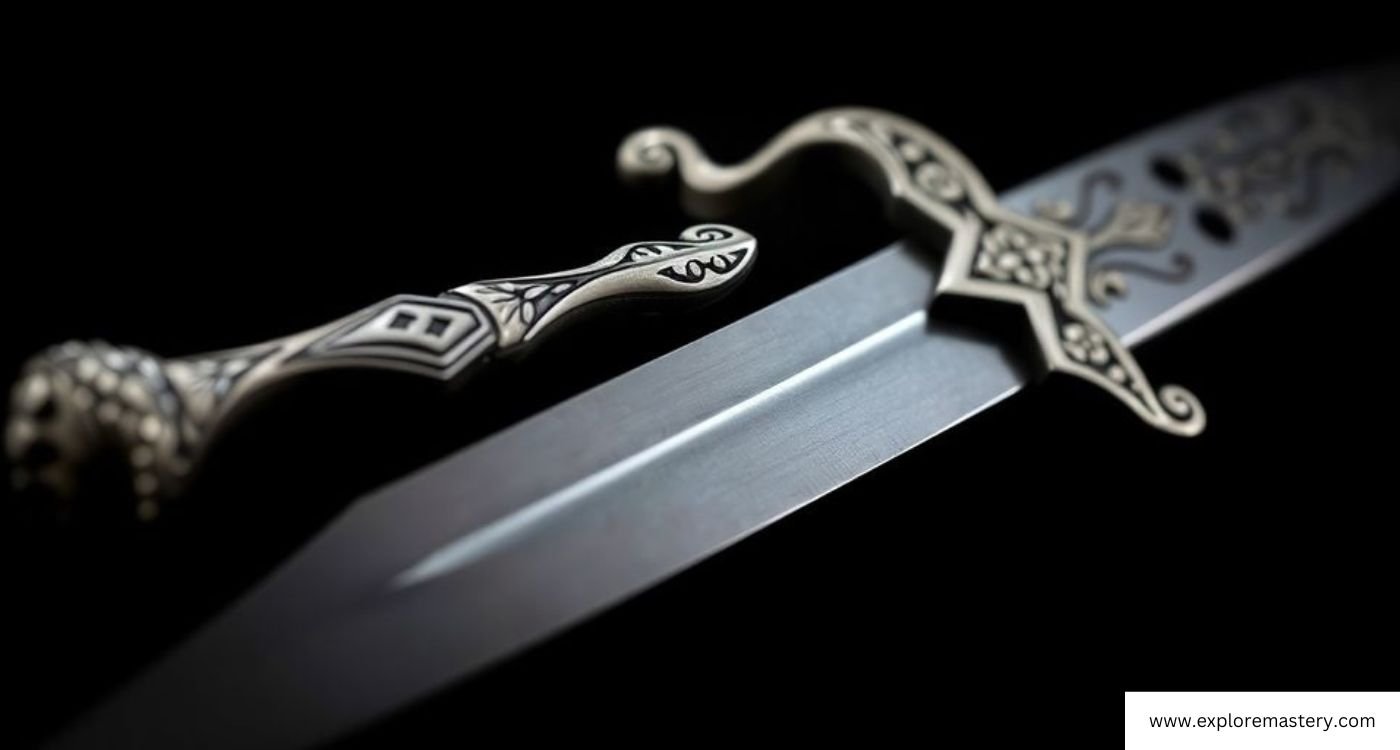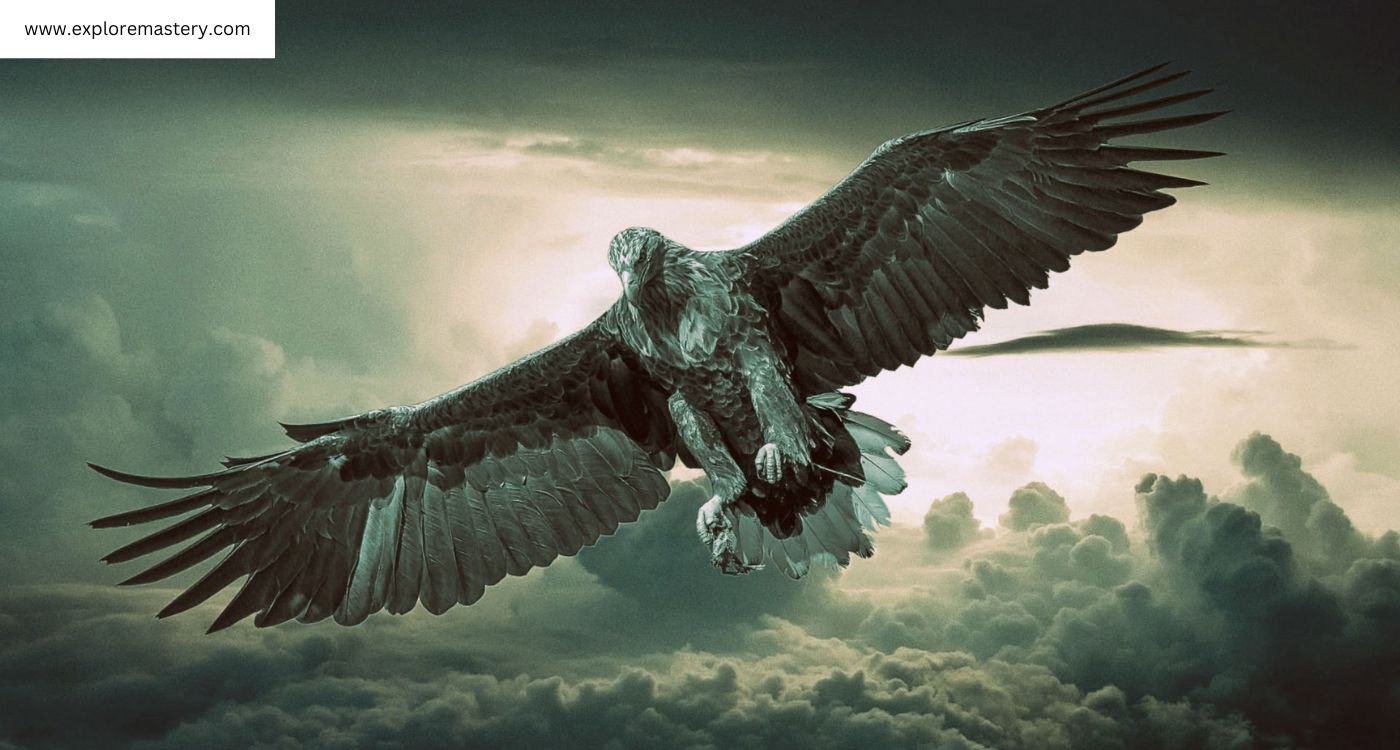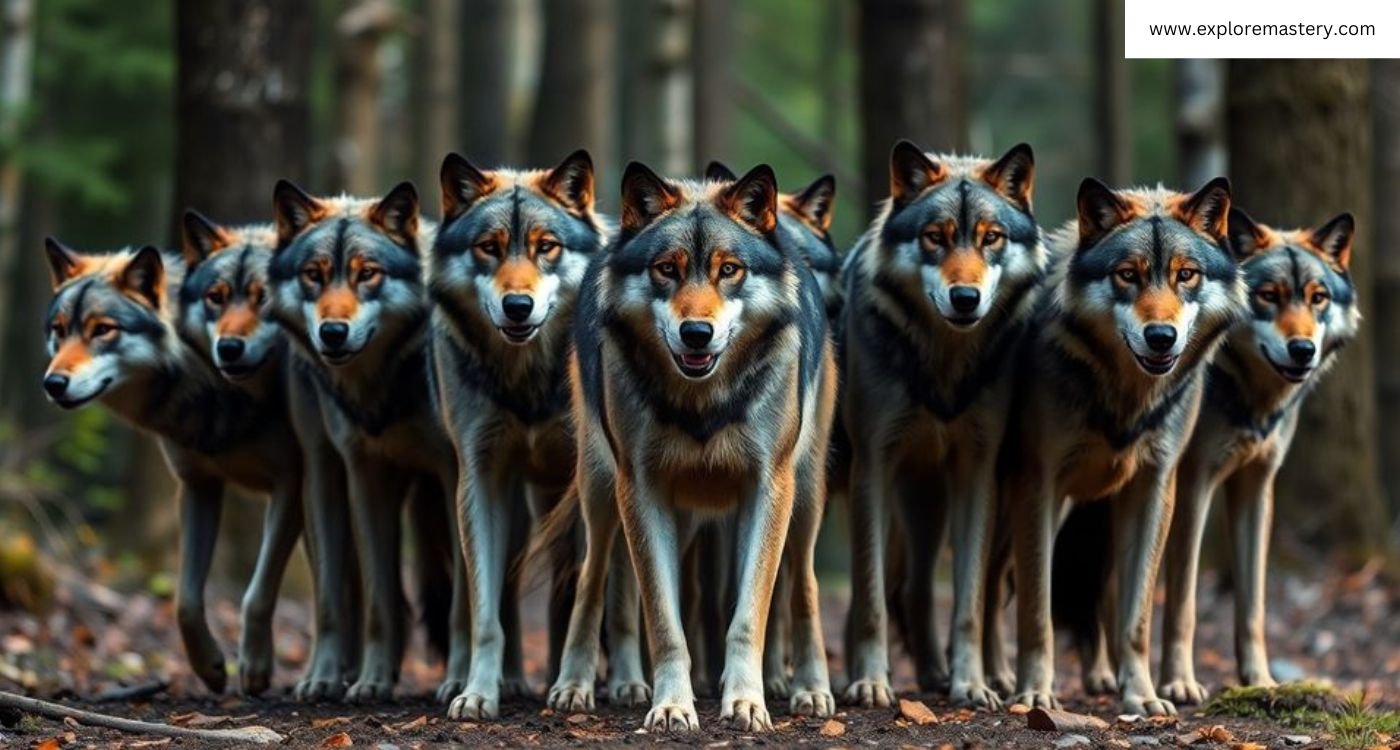Strength can be represented in many ways, and different cultures have their own symbols that capture the essence of resilience and power. From the mighty oak tree to the fierce lion, these icons remind us of the qualities we all aspire to embody. This article explores various symbols of strength and their meanings, providing insights into what symbolizes strength across different cultures.
Overview
- The oak tree stands for endurance and stability, representing nature’s ability to withstand storms.
- The lion symbolizes courage and bravery, often seen as a leader in many cultures.
- The phoenix is a powerful metaphor for rebirth and renewal, showcasing resilience after hardship.
- Swords represent power and personal strength, often seen in stories as tools for overcoming challenges.
- Mountains symbolize the challenges we face in life, reminding us to persevere and rise above adversity.
Table of contents
- Overview
- The Mighty Oak: Nature’s Symbol of Strength
- The Lion: King of the Jungle and Emblem of Courage
- The Phoenix: Rising from the Ashes
- The Sword: A Timeless Symbol of Power
- The Mountain: Standing Tall Against Adversity
- The Eagle: Soaring High with Vision and Power
- The Shield: Protection and Endurance
- The Wolf: Strength in Unity and Leadership
- Conclusion
- Frequently Asked Questions
The Mighty Oak: Nature’s Symbol of Strength
The oak tree stands tall as a powerful symbol of strength and resilience in nature. Known for its deep roots and sturdy trunk, the oak has been revered across cultures for centuries. Its ability to withstand storms and harsh conditions makes it a true testament to endurance.

Historical Significance of the Oak
The oak tree has played a significant role in various cultures throughout history. In ancient Europe, it was considered sacred, often associated with gods and wisdom. The Druids, for instance, celebrated the oak for its strength and longevity, believing it to be a bridge between the earthly and the divine.
Cultural Representations in Art and Literature
The oak has inspired countless works of art and literature. From poems to paintings, it symbolizes not just physical strength but also moral fortitude. Many stories depict the oak as a guardian of the forest, representing stability and protection.
Lessons from the Oak’s Resilience
The oak teaches us valuable lessons about resilience:
- Endurance: Just like the oak, we can withstand life’s storms.
- Growth: The oak grows slowly but steadily, reminding us that patience is key.
- Community: Oaks often grow in forests, symbolizing the strength found in unity.
The mighty oak reminds us that true strength lies not just in size, but in the ability to stand firm against adversity.
In summary, the oak tree is more than just a tree; it is a symbol of strength, resilience, and the enduring spirit of nature. Its legacy continues to inspire us to grow and thrive, no matter the challenges we face.
The Lion: King of the Jungle and Emblem of Courage

The Lion in Mythology and Folklore
The lion has been a powerful symbol in many cultures throughout history. In mythology, lions often represent courage and strength. For example, in ancient Greece, the lion was associated with the goddess Sekhmet, who embodied war and protection. The lion’s roar is a call to bravery, inspiring many tales of heroism.
Symbolism in Modern Media
Today, lions continue to symbolize courage and leadership in movies, books, and art. They are often depicted as noble creatures that lead their pride with strength and wisdom. From Disney’s “The Lion King” to various sports teams, the lion’s image is used to evoke feelings of power and resilience.
What We Can Learn from the Lion’s Strength
The lion teaches us valuable lessons about facing challenges head-on. Here are a few key takeaways:
- Courage: Stand tall in the face of adversity.
- Leadership: Guide others with strength and compassion.
- Community: Work together, just like a lion pride.
The lion reminds us that true strength lies not just in physical power, but in the courage to protect and lead those we care about.
In conclusion, the lion is more than just a fierce animal; it is a symbol of courage, strength, and resilience that inspires us to be brave in our own lives. Its legacy as the king of the jungle continues to resonate, reminding us of the power of unity and leadership.
The Phoenix: Rising from the Ashes

Origins of the Phoenix Legend
The phoenix is a fascinating bird found in many cultures, not just in Greek mythology. It is known for its incredible ability to rise from its own ashes after being consumed by fire. This powerful symbol represents renewal and the idea that we can overcome challenges. In ancient Egypt, the phoenix was linked to the sun god Ra, symbolizing the daily cycle of life and rebirth.
The Phoenix in Popular Culture
Today, the phoenix appears in various forms of media, from movies to books. It often represents hope and the idea that we can start anew, no matter how tough things get. Here are some popular representations:
- Harry Potter: Fawkes, Dumbledore’s phoenix, symbolizes loyalty and rebirth.
- X-Men: The character Jean Grey transforms into the Phoenix, showcasing immense power and transformation.
- Video Games: Many games feature phoenixes as symbols of resurrection and strength.
Personal Growth and the Phoenix Metaphor
The phoenix teaches us valuable lessons about personal growth. When we face difficulties, we can choose to rise above them, just like the phoenix. Here are some key takeaways:
- Embrace change: Change can be scary, but it often leads to new beginnings.
- Learn from failures: Every setback is an opportunity to learn and grow.
- Stay hopeful: No matter how dark things seem, there is always a chance for renewal.
The phoenix reminds us that in the face of adversity, we can find the strength to rise again. This resilience is a powerful part of the human spirit.
The Sword: A Timeless Symbol of Power

Throughout history, the sword has stood as a powerful emblem of strength and authority. It represents not just physical might but also the courage and determination of those who wield it. Swords have been used in battles, ceremonies, and as symbols of leadership, making them a timeless icon of power.
Historical Use of Swords in Battle
- Swords have been essential weapons in many cultures, from the Roman gladius to the Japanese katana.
- They symbolize the warrior spirit and the fight for justice and honor.
- Famous battles, like those fought by knights in medieval Europe, often featured swords as the primary weapon.
Swords in Literature and Film
- Swords are frequently depicted in stories, representing heroism and adventure.
- Iconic characters, such as King Arthur with Excalibur, showcase the sword as a symbol of rightful power.
- Modern films often use swords to illustrate the struggle between good and evil, reinforcing their status as symbols of strength.
The Sword as a Metaphor for Personal Strength
- The sword can symbolize personal growth and the journey of overcoming challenges.
- Just as a sword is forged in fire, individuals can emerge stronger from their own trials.
- Embracing the sword’s symbolism encourages us to face our fears and stand firm in our beliefs.
The sword is not just a weapon; it is a reminder that true strength lies in our ability to rise above adversity and protect what we hold dear.
In conclusion, the sword remains a timeless symbol of power, representing the strength of the human spirit and the courage to fight for what is right. Its legacy continues to inspire us to be resilient and brave in our own lives.
The Mountain: Standing Tall Against Adversity

Mountains are powerful symbols of strength and resilience. They stand tall against the forces of nature, reminding us that we can endure challenges just like they do. The spirit of the Tanggula Mountain symbolizes perseverance, selfless dedication, and resilience in the face of challenges.
Mountains in Cultural Narratives
- In many cultures, mountains represent stability and endurance.
- They are often seen as sacred places, where people go to find peace and strength.
- Stories of heroes overcoming mountains reflect our own struggles and triumphs.
The Mountain as a Personal Challenge
Climbing a mountain is not just a physical challenge; it’s a metaphor for facing life’s difficulties. Each step up a mountain can be tough, but reaching the top brings a sense of accomplishment and strength. Here are some lessons we can learn:
- Patience: Just like climbing, overcoming challenges takes time.
- Determination: Keep pushing forward, even when it gets tough.
- Support: Just as climbers often work in teams, we can rely on friends and family for help.
Climbing Mountains: A Journey of Strength and Perseverance
The journey of climbing a mountain teaches us about resilience. It shows us that even when the path is steep and rocky, we can find the strength to keep going.
The mountain stands as a reminder that we can rise above our challenges, just as it rises above the landscape.
In conclusion, mountains inspire us to be strong and resilient. They remind us that we can face our own mountains in life and emerge victorious!
The Eagle: Soaring High with Vision and Power

The Eagle in Native American Culture
The eagle is a powerful symbol in many Native American cultures. It represents freedom, strength, and connection to the divine. Many tribes believe that the eagle carries their prayers to the Great Spirit. Eagles are often seen as messengers of the gods, soaring high above the earth and providing guidance.
Eagles in National Symbols
They are also prominent in national symbols around the world. For example, the bald eagle is a symbol of the United States, representing courage and resilience. Other countries, like Mexico, feature eagles in their national emblems, showcasing their importance in cultural identity. Here’s a quick look at some national symbols:
| Country | National Symbol | Meaning |
|---|---|---|
| United States | Bald Eagle | Freedom and strength |
| Mexico | Eagle on Cactus | Resilience and heritage |
| Germany | Imperial Eagle | Power and authority |
Lessons from the Eagle’s Flight
The eagle teaches us valuable lessons about life. Here are a few:
- Vision: Eagles have incredible eyesight, reminding us to keep our goals in sight.
- Courage: They face storms head-on, showing us the importance of bravery in tough times.
- Perspective: By soaring high, eagles gain a broader view, encouraging us to look at the bigger picture in our lives.
The eagle’s flight inspires us to rise above challenges and embrace our true potential.
In conclusion, the eagle symbolizes strength and resilience across various cultures. Its majestic presence reminds us to soar high and face life’s challenges with courage and determination. Eagles embody the spirit of power and vision, encouraging us to embrace our own strength.
The Shield: Protection and Endurance

Historical Use of Shields in Warfare
Shields have been used throughout history as vital tools in battle. They serve not only as protection but also as symbols of strength and bravery. Here are some key points about their historical significance:
- Defense: Shields were primarily used to block attacks and protect warriors.
- Status: The design and decoration of a shield often indicated the rank and status of the warrior.
- Cultural Identity: Different cultures had unique shield designs that represented their values and beliefs.
Shields in Heraldry and Symbolism
In heraldry, shields are more than just protective gear; they represent family lineage and values. Here are some aspects of their symbolism:
- Courage: A shield symbolizes the courage to stand up against challenges.
- Protection: It represents the idea of safeguarding oneself and others.
- Unity: Shields can symbolize the strength found in community and teamwork.
The Shield as a Symbol of Personal Boundaries and Protection
In our daily lives, the concept of a shield can be applied to personal boundaries. Here’s how:
- Setting Limits: Just like a shield protects in battle, personal boundaries protect our emotional well-being.
- Empowerment: Establishing boundaries empowers us to say no and prioritize our needs.
- Resilience: A strong sense of self can help us withstand external pressures and challenges.
A shield is not just a physical object; it embodies the spirit of protection and resilience. It reminds us that we can stand strong against adversity and safeguard our values and well-being.
In conclusion, the shield symbolizes not only physical protection but also emotional strength and resilience. It teaches us the importance of standing firm in our beliefs and protecting what matters most to us. The shield is a powerful reminder of our ability to endure and thrive.
The Wolf: Strength in Unity and Leadership

The Wolf in Myth and Legend
Wolves have long been seen as powerful creatures in many cultures. They symbolize strength, loyalty, and intelligence. In Native American traditions, wolves are revered for their ability to work together in packs, showcasing the importance of unity. Their social structure teaches us that strength is not just about individual power, but about collaboration and teamwork.
Wolves in Modern Culture
In today’s media, wolves often represent courage and resilience. Movies and books frequently depict them as noble creatures that protect their families and territories. This portrayal reinforces the idea that true strength comes from standing together and supporting one another.
What We Can Learn from the Wolf’s Pack Mentality
The wolf’s pack mentality offers valuable lessons for us:
- Teamwork: Just like wolves rely on each other for hunting and protection, we can achieve more when we work together.
- Leadership: In a pack, leadership is shared, and every member plays a role. This teaches us that effective leadership involves listening and valuing everyone’s contributions.
- Resilience: Wolves adapt to their environment and face challenges head-on, reminding us to be resilient in our own lives.
The wolf embodies the spirit of unity and strength, reminding us that together, we can overcome any obstacle.
By embracing the lessons from wolves, we can foster a sense of community and support, leading to greater achievements in our personal and collective journeys.
Conclusion
In closing, the many symbols that stand for strength and resilience, from Africa to Asia and beyond, show us that we all share a common journey of facing challenges and bouncing back. These symbols remind us of our ability to adapt and grow, no matter where we come from. They connect us through the universal ideas of courage and perseverance. Let these powerful symbols inspire you to recognize your own inner strength when life gets tough. By learning from those who have faced hardships before us, we can find the bravery and determination to keep moving forward. Remember, in tough times, we are not alone; we are part of a strong community that has always found ways to thrive.
Frequently Asked Questions
What are some common symbols of strength?
Some well-known symbols of strength include the lion, eagle, oak tree, sword, and mountain. Each of these represents different aspects of power and resilience.
Why is the lion considered a symbol of strength?
The lion is often called the king of the jungle. It represents bravery, courage, and leadership, making it a powerful symbol of strength in many cultures.
What does the oak tree symbolize?
The oak tree symbolizes endurance and stability. Its strong trunk and deep roots allow it to withstand storms, representing resilience in nature.
How does the eagle represent power?
The eagle is known for its ability to soar high in the sky, symbolizing vision and freedom. It represents strength and the ability to rise above challenges.
What is the significance of the phoenix?
The phoenix is a mythical bird that rises from its ashes. It symbolizes rebirth and renewal, showing that one can overcome destruction and emerge stronger.
Can you give examples of cultural symbols of resilience?
Yes! Different cultures have symbols like the bamboo (flexibility), the scarab beetle (transformation), and the anchor (stability), all representing resilience in various ways.



